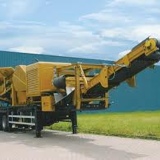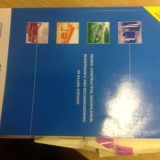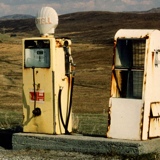Information
-
Document No.
-
Audit Title
-
Client / Site
-
Conducted on
-
Prepared by
-
Location
-
Personnel
-
Name of Site
-
Permit No
-
Officer Name
- Ciara Daly
- Paul Swift
- Bronagh Carney
-
Date
PERMIT CONDITIONS
-
The requirements of the conditions of this permit shall come into effect immediately unless otherwise indicated in an individual condition.
Emission Limits
-
1. All releases to air, other than condensed water vapour, shall be free from persistent visible emissions
-
2. All emissions to air shall be free from droplets.<br>
-
3. There shall be no visible emissions across the site boundary.<br>
Monitoring, Investigations and Recording
-
4. The operator shall keep records of inspections, tests and monitoring, including all non-continuous monitoring, inspections and visual assessments. The records shall be:<br>• kept on site<br>• kept by the operator for at least two years<br>• made available for an inspector from the Council to examine<br>
-
5. Any historical records kept off-site shall be made available for inspection within one working week of any request by the Council.<br>
-
6. Visual assessments of emissions shall be made frequently and at least three times a day during operations. The time, location and result of these assessments shall be recorded.
-
7. Where, in the opinion of the Council, there is evidence of airborne dust from the process off the site, corrective action shall be taken without delay. If the source of the emission is uncertain the operator shall make their own inspection and assessment, and where necessary undertake ambient monitoring with the aim of identifying those process operations giving rise to the dust. The monitoring may either be by a British Standard method or by a method agreed with the Council.
-
8. In the case of abnormal emissions, malfunction or breakdown leading to abnormal emissions the operator shall:<br>• investigate and undertake remedial action immediately<br>• adjust the process or activity to minimise those emissions; and<br>• promptly record the events and actions taken<br>
-
9. The council in whose area the plant is operating shall be informed without delay if there is an emission that is likely to have an effect on the local community, as well as Armagh City and District Council.<br> <br>The Environmental Health Department of the council in whose area the plant is operating shall be informed of the operational work plan prior to operations commencing. Armagh City and District Council shall also be informed. <br>
Control Techniques
Stockpiling
-
10. Loading to and from stockpiles, and construction and management of stockpiles shall be carried out in such a manner as to minimise wind-borne dust, e.g. taking place at sheltered points, reduced drop heights and water suppression.
-
11. Conditioning with water or proprietary conditioning agents shall take place at or before the point of discharge from the conveyor.<br>
-
12. Stockpiles shall be suitably profiled and conditioned with water or proprietary conditioning agents, according to weather conditions.<br>
Crusher Operations
-
13. Crushers shall be totally contained or fitted with a water suppression system over the crusher aperture
-
14. Where the use of water as a method of dust suppression is necessary in order to meet the emission limits, it shall be used. In such circumstances, if water of the required pressure is not available for use on the suppression system, then the process shall not operate.
-
15. Where water suppression does not provide adequate dust control to comply with the emission limits then the process shall be carried out under cover. If necessary dust extraction and
-
16. The discharge from the crushers and screener onto conveyors or into other equipment shall be enclosed as far as practicable.<br>
-
17. Deposits of dust on external parts of the plant shall be cleaned off at the end of each working day in order to minimise the potential for wind entrainment.
Fugitive Emissions
-
18. The conveyor shall be of sufficient capacity to handle maximum loads without spillage.<br>
-
19. Where dusty materials are conveyed, the conveyor and any transfer points shall be provided with adequate protection against wind whipping.<br>
-
20. The conveyor shall be fitted with means for keeping the belt clean.<br>
-
21. The conveyor belt shall not be overloaded.<br>
-
22. Water shall be used at conveyor discharge points for dust suppression.<br>
-
23. The last metre of any final size discharge conveyor or stockpile discharge conveyor and the first 0.5 metre of the free fall of materials from conveyors carrying material of a consistent size and shape, shall be fitted with a full hood.<br>
-
24. Where necessary, wheel-cleaning facilities shall be used by vehicles before leaving the site.<br>
Management
-
25. Spares and consumables for plant and equipment concerned with control of dust emissions to air shall be available at short notice so that plant breakdowns can be rectified rapidly.<br>
-
26. Staff with responsibility for operating the process shall provided with training and instruction in their duties relating to control of the process and emissions to air. Training shall include:<br>• awareness of their responsibilities under the permit, for example;<br>• minimising emissions on start up and shut down<br>• action to minimise emissions during abnormal conditions<br>
-
27. The operator shall maintain a statement of training requirements for each operational post and keep a record of the training received by each person whose actions may have an impact on the environment. These documents shall be made available to the Council on request.
-
28. Effective preventative maintenance shall be employed on all aspects of the process including all plant, buildings and the equipment concerned with the control of emissions to air. In particular:<br>• a written maintenance programme shall be provided to the Council with respect to pollution control equipment; and<br>• a record of such maintenance shall be made available for inspection.<br>
-
Add media
-
Add signature










